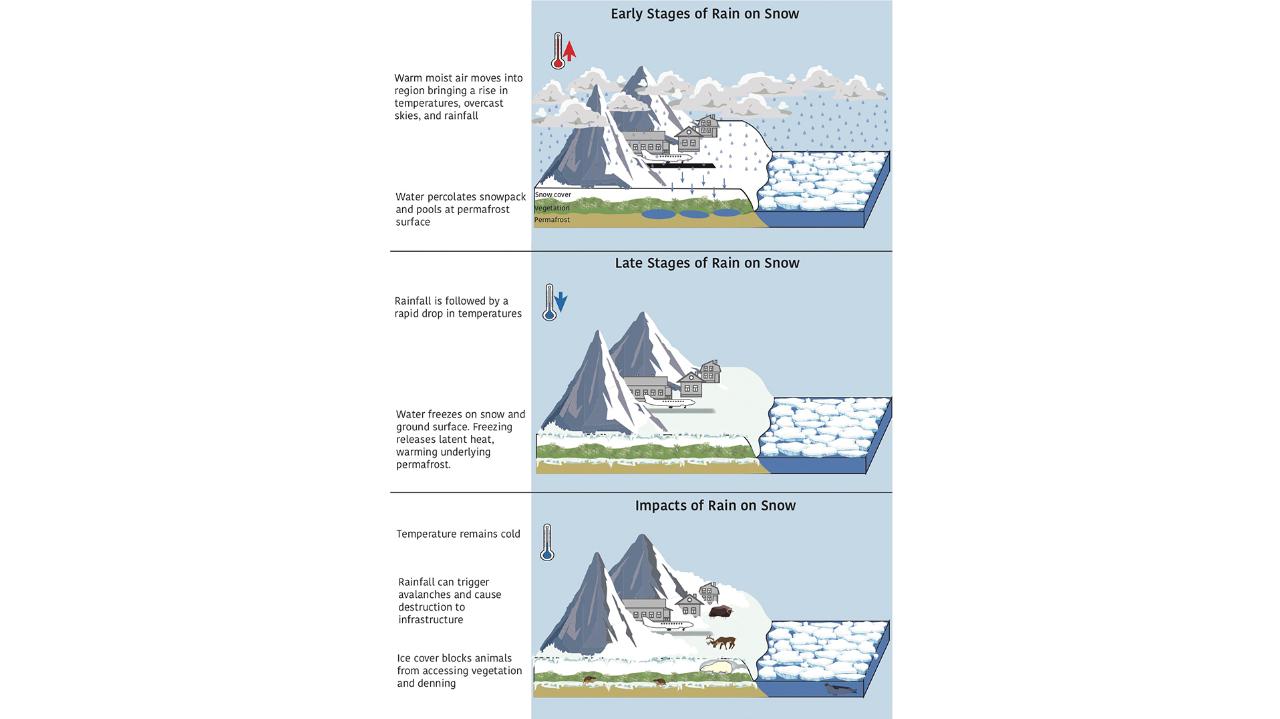Mark Serreze
NSIDC Director, Distinguished Professor of Geography
- Ph.D., University of Colorado, 1989
Research Interests
I am an Arctic climate scientist and Director of the CIRES National Snow and Ice Data Center. Over the past two decades, my research has focused on making sense of the profound changes unfolding in the North—shrinking sea ice, rapidly rising temperatures—thawing permafrost—and what they mean not just for the Arctic’s future but for the rest of the planet. I am also very active in science outreach and education. Today, more than ever, it is important that scientists reach out and make science more accessible and relevant to society.
Current Research
Much of my current research focuses on leading the Arctic Rain on Snow Study (AROSS), a project within the National Science Foundation’s Navigating the New Arctic (NNA) initiative seeking to better understand the distribution, severity, and changes in the frequency of rain on snow and melt-refreeze events in the Arctic and their impacts.
There is increasing recognition that rain on snow events are having significant and sometimes even catastrophic impacts on the physical and living environments of the North (see figure). These events are generally associated with short-lived warm spells in autumn and winter, linked to extratropical cyclones that generate rain, followed by a rapid drop in temperature. The rainwater may freeze on the surface or percolate through the snowpack and pool at the ground surface, depending upon the thickness and density of the snowpack and the intensity of the precipitation event. After refreezing, ice crusts can variously form on the snow surface, as layers within the snow, or at the base of the snowpack.
Rain on snow events can foster avalanches, influence snow structure, warm underlying permafrost and increase the depth of the permafrost active layer. Impacts have been documented on vegetation and soil organisms. Rain on snow events influence population dynamics of lemmings, voles and bird species that seek shelter in the snowpack, including owls, ptarmigan and grouse. Icing may lead to a fading of lemming cycles, causing crashes of Arctic predators such as snowy owls and Arctic fox, which depend on them. In marine environments, polar bears and ringed seals are also impacted – rains early in the breeding season can melt subnivean lairs and increase cub mortality. Perhaps the most devastating impact of ROS events, however, and a major focus of the AROSS effort, is that ice layers, in creating barriers that prohibit foraging, can lead to massive die-offs of large herbivores, with concomitant social-economic impacts, especially in regions where humans depend on either wild or semi-domesticated populations of Rangifer species (caribou and reindeer) for food, transportation and other needs.
Research Categories
Climate and Weather, Cryosphere, Oceans, SpaceResearch Images
Honors and Awards
to
Invalid date -Sponsors
-
Invalid dateP.I.(s)
About CECA
CECA connects and creates a supportive environment for graduate students and postdocs who come from various academic units to do research in CIRES.
